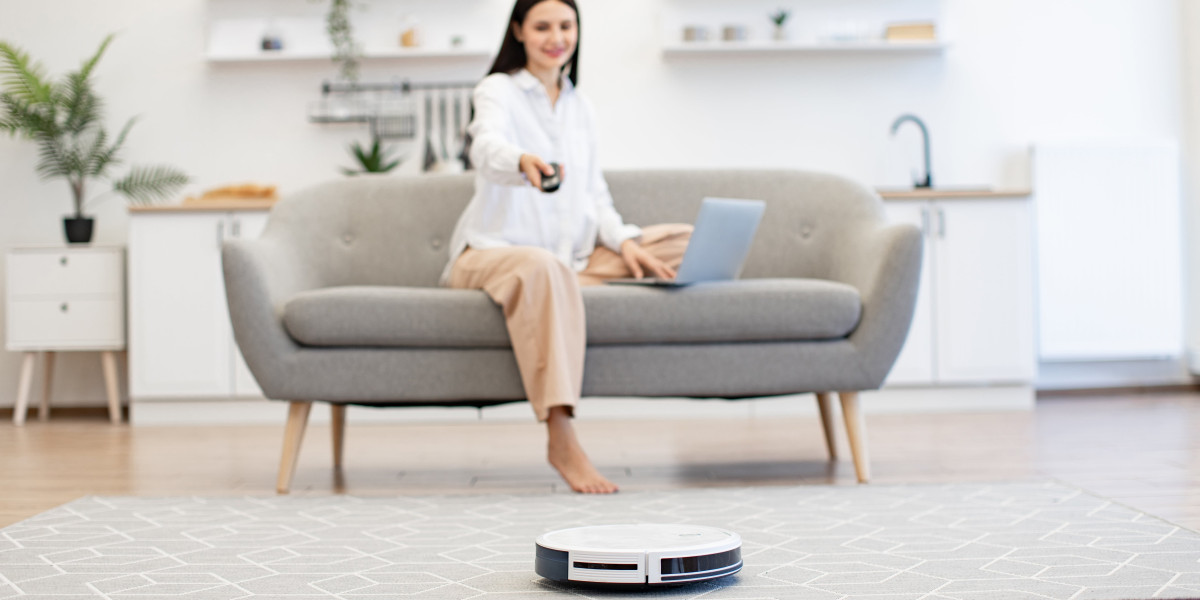Finding Your Perfect Cleaning Companion: A Guide to Choosing the Right Robot Vacuum Cleaner
The hum of a robot vacuum vigilantly working its way across your floors has ended up being an increasingly familiar noise in modern-day homes. These automated cleaning marvels have actually moved from futuristic novelty to family essential, providing a tantalizing promise: recovering your valuable time from the drudgery of vacuuming. With busy schedules and a desire for cleaner living areas, it's not surprising that robot vacuums are soaring in popularity.
However stepping into the world of robot vacuums can feel like browsing a complicated maze. The market is flooded with alternatives, each appealing exceptional cleaning power, advanced navigation, and intelligent features. From affordable standard models to high-end robots loaded with innovative innovation, the large range can be frustrating. So, how do you sift through the noise and figure out which robot vacuum is genuinely the right fit for your home and way of life?

This guide aims to debunk the process, offering you with a thorough summary of the crucial aspects to think about when choosing a robot vacuum. By comprehending these functions and carefully assessing your requirements, you can with confidence select a robotic helper that will seamlessly incorporate into your life and keep your floorings spotless without you raising a finger.
Key Features to Consider When Choosing a Robot Vacuum Cleaner
Browsing the specifications and marketing lingo surrounding robot vacuums can be daunting. To streamline your decision-making, concentrate on these essential functions that directly effect efficiency, convenience, and general satisfaction:
Suction Power: This is perhaps the most fundamental element of any vacuum cleaner, robotic or conventional. Suction power figures out how effectively the robot can raise dirt, dust, particles, and pet hair from your floors. Measured in Pascals (Pa), greater suction power usually equates to better cleaning performance, specifically on carpets and rugs.
- Consider your floor types: Hardwood floorings and tile need less suction power than medium-pile or high-pile carpets. If your home is mostly carpeted, focus on robots with greater suction capabilities.
- Look for adjustable suction levels: Some robotics offer adjustable suction settings, permitting you to customize the power based on the surface area being cleaned up. This can be helpful for fragile carpets or taking full advantage of battery life on hard floors.
Navigation and Mapping: How a robot vacuum browses your home is important for efficient and extensive cleaning. Various navigation technologies exist, each with its own strengths and weaknesses:
- Random Bounce Navigation: Simpler and typically discovered in spending plan models, these robots move arbitrarily, bouncing off challenges till they cover the location. While they ultimately clean, they may miss areas and are less efficient.
- Systematic Navigation (Row-by-Row): These robots clean in organized rows, making sure more complete coverage and effective cleaning patterns.
- Smart Mapping (LiDAR or vSLAM): Advanced robots utilize LiDAR (Light Detection and Ranging) or vSLAM (visual Simultaneous Localization and Mapping) to produce in-depth maps of your home. This permits:
- Efficient course preparation: Optimizing cleaning paths for faster and more extensive cleaning.
- Room-specific cleaning: Directing the robot to tidy particular rooms or zones through an app.
- Virtual borders and no-go zones: Setting up virtual walls or no-go zones to prevent the robot from getting in particular areas or harmful fragile items.
- Multi-floor mapping: Storing maps for several floors in your house, perfect for multi-level homes.
Battery Life and Coverage Area: The battery life of a robot vacuum determines for how long it can clean up on a single charge and subsequently, the location it can cover.
- Consider your home size: Larger homes require robotics with longer battery life. Take notice of the producer's mentioned runtime and coverage location, remembering these are often approximates under perfect conditions.
- Auto-recharge and resume: Many robotics include auto-recharge and resume performance, allowing them to immediately go back to their charging dock when the battery is low, charge, and then resume cleaning where they ended. This feature is especially important for larger homes.
Dustbin Capacity: The size of the dustbin impacts how frequently you require to empty it.
- Consider your cleaning frequency and pet scenario: If you have pets or run your robot vacuum often, a bigger dustbin is more effective to minimize emptying frequency. Smaller dustbins might be sufficient for smaller sized homes or less frequent cleaning schedules.
- Self-emptying dustbins: Some premium designs include self-emptying bases. After each cleaning cycle (or numerous cycles), the robot instantly moves collected particles into a bigger bin in the base, significantly reducing manual emptying.
Smart Features and App Control: Modern robot vacuums frequently come equipped with smart features controllable through a smartphone app. These functions can considerably improve convenience and personalization:
- Scheduling: Set cleaning schedules to immediately run the robot at particular times, even when you're not home.
- Remote control and tracking: Start, stop, and monitor cleaning progress remotely through the app.
- Zone cleaning and area cleaning: Direct the robot to clean specific areas or spills as needed.
- No-go zones and virtual walls: Define locations the robot ought to avoid, safeguarding delicate items or avoiding access to specific spaces.
- Voice control combination: Control the robot with voice commands by means of smart home assistants like Amazon Alexa or Google Assistant.
- Cleaning history and reports: Track cleaning history, view maps, and get performance reports.
Mopping Functionality (2-in-1 Models): Some robot vacuums use a 2-in-1 performance, integrating vacuuming and mopping in a single gadget.
- Consider your floor types and cleaning requirements: 2-in-1 robots can be convenient for homes with tough floors, offering a dual cleaning action. However, mopping functionality frequently differs in effectiveness and might not replace a dedicated mop for durable cleaning.
- Types of mopping: Look for details on the mopping system used. Some utilize basic damp cloths, while others provide vibrating or oscillating mop pads for more effective scrubbing. Water tank size and adjustable water flow settings are also pertinent considerations.
Brush Roll and Filtration: The design of the brush roll and filtering system impacts cleaning effectiveness and is particularly crucial for allergic reaction victims.
- Brush roll types: Different brush roll designs are much better matched for different floor types. Try to find:
- Bristle brushes: Effective for carpets for agitating and lifting embedded dirt.
- Silicone/Rubber fin brushes: Gentler on difficult floorings and much better at handling pet hair, reducing tangling.
- Mix brushes: Designed to work well on both carpets and hard floorings.
- Filtering systems: HEPA filters are essential for capturing fine dust, irritants, and pet dander, improving air quality. Consider the kind of purification system and whether replacement filters are easily available and affordable.
- Brush roll types: Different brush roll designs are much better matched for different floor types. Try to find:
Sound Level: Robot vacuums produce noise during operation, though usually less than conventional vacuums.
- Think about noise sensitivity and cleaning times: If you are delicate to noise or strategy to run the robot while you are home, inspect the noise level specs (determined in decibels - dB). Lower dB worths show quieter operation.
Cost and Budget: Robot vacuums span a broad price range, from affordable options to premium designs.
- Identify your spending plan: Set a practical budget plan before you start shopping. Focus on the functions crucial to you within your budget.
- Balance features and price: Consider which robot vacuum cleaner (visit link) functions are vital for your requirements and which you can live without. Frequently, mid-range models offer a good balance of features and efficiency without breaking the bank.
Browsing the Choice: Matching Features to Your Needs
Selecting the best automatic vacuum cleaner robot vacuum isn't about finding the "best" model in general, but rather the very best robot vacuum cleaners uk model for you. By carefully considering your particular needs and top priorities, you can make an informed choice:
- For Pet Owners: Prioritize robotics with strong suction, tangle-free brush rolls (silicone or rubber fin brushes are often suggested for pet hair), HEPA filters, and bigger dustbins.
- For Homes with Carpets: Focus on robots with high suction power, bristle brushes, and potentially adjustable brush head height for ideal carpet cleaning.
- For Homes with Hard Floors: Navigation, systematic cleaning patterns, and even 2-in-1 mop/vacuum performance end up being more vital. Suction power requirements may be somewhat lower.
- For Large Homes: Battery life, auto-recharge and resume, and effective navigation with mapping are vital for covering larger locations effectively.
- For Tech Enthusiasts: Explore robotics with sophisticated smart features, app control, voice integration, and in-depth mapping capabilities.
- For Budget-Conscious Buyers: While fundamental designs might lack innovative functions, they can still supply automatic cleaning. Concentrate on necessary functions within your budget plan, such as good suction and basic navigation.
Making Your Final Decision
Choosing a robot vacuum cleaner is an investment in benefit and a cleaner home. By comprehending the essential features and aligning them with your particular requirements, you can with confidence browse the market and discover the perfect robotic cleaning companion. Remember to read evaluations, compare specifications, and eventually pick a design that will effortlessly incorporate into your life and help you reclaim your time and delight in a cleaner, more comfy living space.
Frequently Asked Questions (FAQs) about Robot Vacuum Cleaners
- Are robot vacuum cleaners worth it?
- For many, yes. Robot vacuums offer substantial convenience by automating floor cleaning, saving effort and time. They are especially useful for busy individuals, pet owners, and those with mobility constraints.
- The length of time do robot vacuum cleaners last?
- The life expectancy varies depending upon the brand name, model, and usage. Usually, a good quality robot vacuum can last for 3-5 years with proper maintenance. Battery life tends to deteriorate gradually and might need replacement ultimately.
- Can robot vacuums change regular vacuums?
- For everyday or routine maintenance cleaning, robot vacuums can significantly decrease the requirement for standard vacuuming. Nevertheless, for deep cleaning, reaching corners, stairs, or upholstery, a conventional vacuum cleaner may still be essential. Lots of people use robot vacuum cleaners uk vacuums for routine cleaning and supplement with a stick or portable vacuum for area cleaning and more extensive tasks.
- Do robot vacuums deal with carpets?
- Yes, numerous robot vacuums work well on carpets, especially designs with strong suction and bristle brushes. Nevertheless, performance can differ depending upon carpet stack height and robot model. Examine requirements and reviews to ensure the robot appropriates for your carpet type.
- Do robot vacuums deal with family pets?
- Numerous robot vacuums are developed to deal with pet hair efficiently. Try to find models with tangle-free brush rolls, strong suction, and HEPA filters to record pet dander and allergens. Clearing the dustbin more often may be required with animals.
- How often should I run my robot vacuum?
- The ideal cleaning frequency depends upon your needs and way of life. Daily cleaning is useful for high-traffic areas and pet owners. Running the robot a couple of times a week may be sufficient for less busy households. Scheduling functions make it simple to automate cleaning according to your desired frequency.
- How do I maintain a robot vacuum?
- Regular upkeep is important for optimal performance and longevity. This includes:
- Emptying the dustbin regularly.
- Cleaning the brush roll and side brushes of hair and particles.
- Cleaning or replacing filters as suggested by the producer.
- Wiping down sensing units and charging contacts.
- Checking for and clearing any obstructions in the robot's path.
- Regular upkeep is important for optimal performance and longevity. This includes:
By thinking about these aspects and addressing these FAQs, you are well-equipped to navigate the world of robot vacuum and find the perfect automated cleaning solution for your home. Pleased cleaning!









